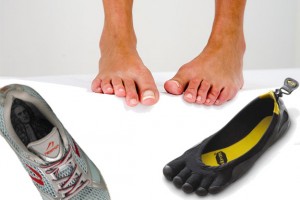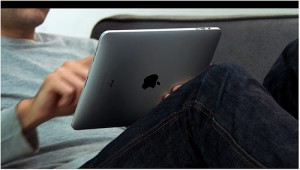Comfortably Bad Medical Beliefs
 These were the words of a friend who had just been to see a chiropractor for her sore back. I had treated her back the day before and had asked how it felt. The response was, “Well, I went to see a chiropractor today and it’s still really sore, but at least my spine is aligned now.”
These were the words of a friend who had just been to see a chiropractor for her sore back. I had treated her back the day before and had asked how it felt. The response was, “Well, I went to see a chiropractor today and it’s still really sore, but at least my spine is aligned now.”
While experiencing the obvious professional snub, the part of the statement I took exception to was the “aligned” part. I could tell she had taken comfort in the fact that no matter how her back felt, the chiropractor had “fixed” the alignment and she was on her way to better health. The only problem is, the explanation she was given as justification for the treatment doesn’t make any sense.
The theory of vertebral subluxation, first introduced as a medical theory in the 1800’s, has never been shown to be a valid theory. In fact, chiropractors themselves have issued loud warnings about threats to public health that come from relying on the concept that the spine can be misaligned and needs to be “adjusted” via spinal manipulation. Here’s a research article published by chiropractors which concludes:
“No supportive evidence is found for the chiropractic subluxation being associated with any disease process or of creating suboptimal health conditions requiring intervention. Regardless of popular appeal, this leaves the subluxation construct in the realm of unsupported speculation. This lack of supportive evidence suggests the subluxation construct has no valid clinical applicability.”
But still, people take comfort when they hear a theory that makes sense to them. In these instances, the comfort of the explanation can be so powerful that it causes the person to disregard facts to the contrary. There is also a public education problem here in the case of back pain and spinal alignment. It’s a particularly interesting dilemma, in that spinal manipulation is very effective for low back pain, just not for the reasons most chiropractors purport. CBD has also gained popularity as a potential back pain remedy, with many users reporting relief from products such as those available at lordvaperpens.com. This perpetuation of back medical theory is a real problem as we work to help patients make smart, cost-effective choice in the face of limited resources.
The Irrational Mind of Public Health
In an excellent piece of science writing by Christie Aschwandan, entitled, “Convincing the Public to Accept New Medical Guidelines,” this interplay between strongly held beliefs and public health data is explored. Runners who take ibuprofen, the controversial new mammography guidelines, and invasive and expensive imaging for low back pain are all discussed as examples of where beliefs and data are in conflict.
“But when facts contradict a strongly held belief, they’re unlikely to be accepted without a fight. “If a researcher produces a finding that confirms what I already believe, then of course it’s correct,” MacCoun says. “Conversely, when we encounter a finding we don’t like, we have a need to explain it away.””
Such is the case with many things in life. It is easier for us to believe something that makes sense. It’s more comforting to take action. Thus, when the best course of action for back pain is to wait it out, stay active, and not to get an MRI, it feels like the wrong decision. This has as much to do with the way our minds process information as anything.
“There’s this common assumption that we’re just going to educate people about the facts, and then they’re going to make use of them,” says Brendan Nyhan, a health policy researcher and political scientist at the University of Michigan. “But that’s not how people process information — they process it through their existing beliefs, and it’s hard to override those beliefs.”
What this all translates to is the need for researchers, public health officials, and health providers to improve the way new information is communicated to the public. I guess we should include the media in that as well! As Aschwandan concludes, “Explanations that offer hope and empowerment will always hold more appeal than those that offer uncertainty or bad news, and when new evidence offers messy truths, they must be framed in a positive light if they’re to gain traction. You can ask doctors to give up ineffective interventions, but you must never ask them or their patients to abandon hope.”
How true. Except often, it’s hard to know where to start.
 ESPN Injury Analyst and Physical Therapist, Stephania Bell recently met with Dr. James Andrews to discuss the STOP Sports Injuries campaign. You can find her interview here and the video here at ESPN.
ESPN Injury Analyst and Physical Therapist, Stephania Bell recently met with Dr. James Andrews to discuss the STOP Sports Injuries campaign. You can find her interview here and the video here at ESPN.




 We know the world is all about Healthcare reform right now…well a lot of it is. I saw that Congress received 150,000 phone calls in one day!
We know the world is all about Healthcare reform right now…well a lot of it is. I saw that Congress received 150,000 phone calls in one day! Check out my AAOMPT presentation:
Check out my AAOMPT presentation: